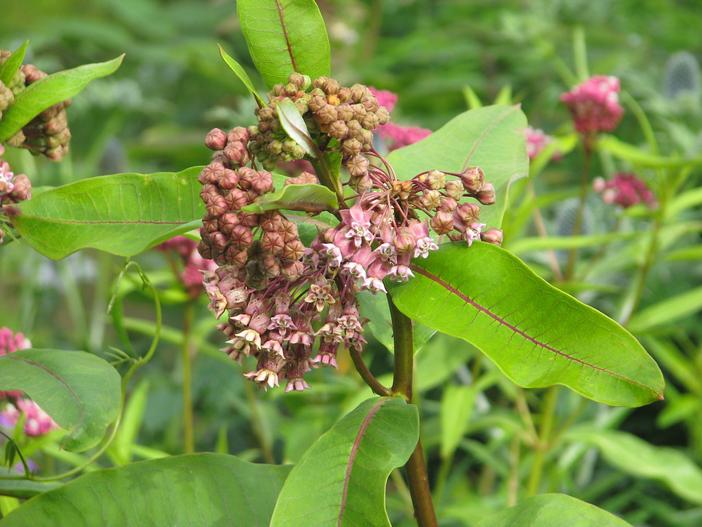Common Milkweed
(Asclepias syriaca)
Common Milkweed (Asclepias syriaca)
/
/

peganum
CC BY-SA 2.0

























































































Estimated Native Range
Summary
Common Milkweed is valued for its role as a host plant for monarch butterflies and as a source of nectar for a variety of pollinators. It is often used in naturalized plantings, butterfly gardens, and as part of conservation efforts to support wildlife. In cultivation, it requires full sun and can tolerate a range of soil conditions, from moist to dry, including clay soils. While it is winter hardy in USDA zones 3–9, gardeners should be aware that it can spread aggressively and may not be suitable for small gardens. It is easily propagated by seed, which requires cold stratification, or by rhizome cuttings. Potential problems include susceptibility to aphids and the possibility of becoming invasive outside its native range, so caution is advised when planting in non-native areas.CC BY-SA 4.0
Plant Description
- Plant Type: Herb
- Height: 2-3 feet
- Width: 0.8-1 feet
- Growth Rate: Moderate
- Flower Color: Pink, White
- Flowering Season: Summer
- Leaf Retention: Deciduous
Growth Requirements
- Sun: Full Sun
- Water: Low, Medium
- Drainage: Slow, Medium
Common Uses
Bee Garden, Bird Garden, Butterfly Garden, Deer Resistant, Drought Tolerant, Edible*Disclaimer: Easyscape's listed plant edibility is for informational use. Always verify the safety and proper identification of any plant before consumption., Erosion Control, Fragrant, Hummingbird Garden, Rabbit Resistant, Showy Flowers, Street Planting
Natural Habitat
Native to open woodlands, prairies, and fields throughout the Eastern United States and Southeast Canada
Other Names
Common Names: Butterfly Flower, Silkweed, Silky Milkweed, Virginia Silkweed, Silky Swallow-Wort, Syrische Seidenpflanze, Seidenpflanze, Gewöhnliche Seidenpflanze, Algodoncillo, Asclepias
Scientific Names: , Asclepias syriaca, Asclepias cornuti, Asclepias syriaca f. leucantha, Asclepias syriaca var. kansana, Asclepias intermedia, Asclepias kansana, Asclepias obtusifolia, Asclepias syriaca f. inermis, Asclepias syriaca f. syriaca
GBIF Accepted Name: Asclepias syriaca L.